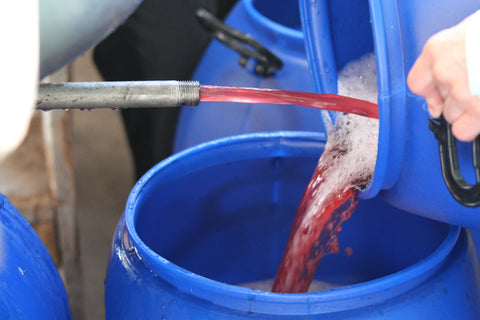In principle, the coffee cherry must is produced after a few hours of dry fermentation and distills a delicious, aromatic, and effervescent coffee must.
On the other hand, the leachates are generated due to the fact that the honey, when they come into contact with the pulp, drags the phenols present in the pulp. One of the characteristics of phenols in contact with air is that they take on a black coloration, which is typical of leachates.

These distillates are usually deoxygenated waters due to the impression of Co2 in the carbonic fermentation processes, and the honey waters are the product of the washing of coffee after the mucilage fermentation process.
Specifically, when the water is discharged into the environment, it finally reaches a water source, contaminating it, eliminating oxygen, and diminishing the life of all organisms in it, especially fish.
Now, the idea is that in the fermentation process the water or leachate with which another coffee was fermented, for example, a geisha, whose notes are usually fruity, sweet, and aromatic, is used to ferment another type of coffee so that this coffee acquires the properties and flavors of the distillate of the previous coffee. The intention is to use the coffee leachates up to a couple of times, when there is no more fermentation it should be replaced with a new must.
Finally, among the developments in the technology for the ecological processing of coffee and the management of by-products avoiding more than 90% of the contaminating load.




